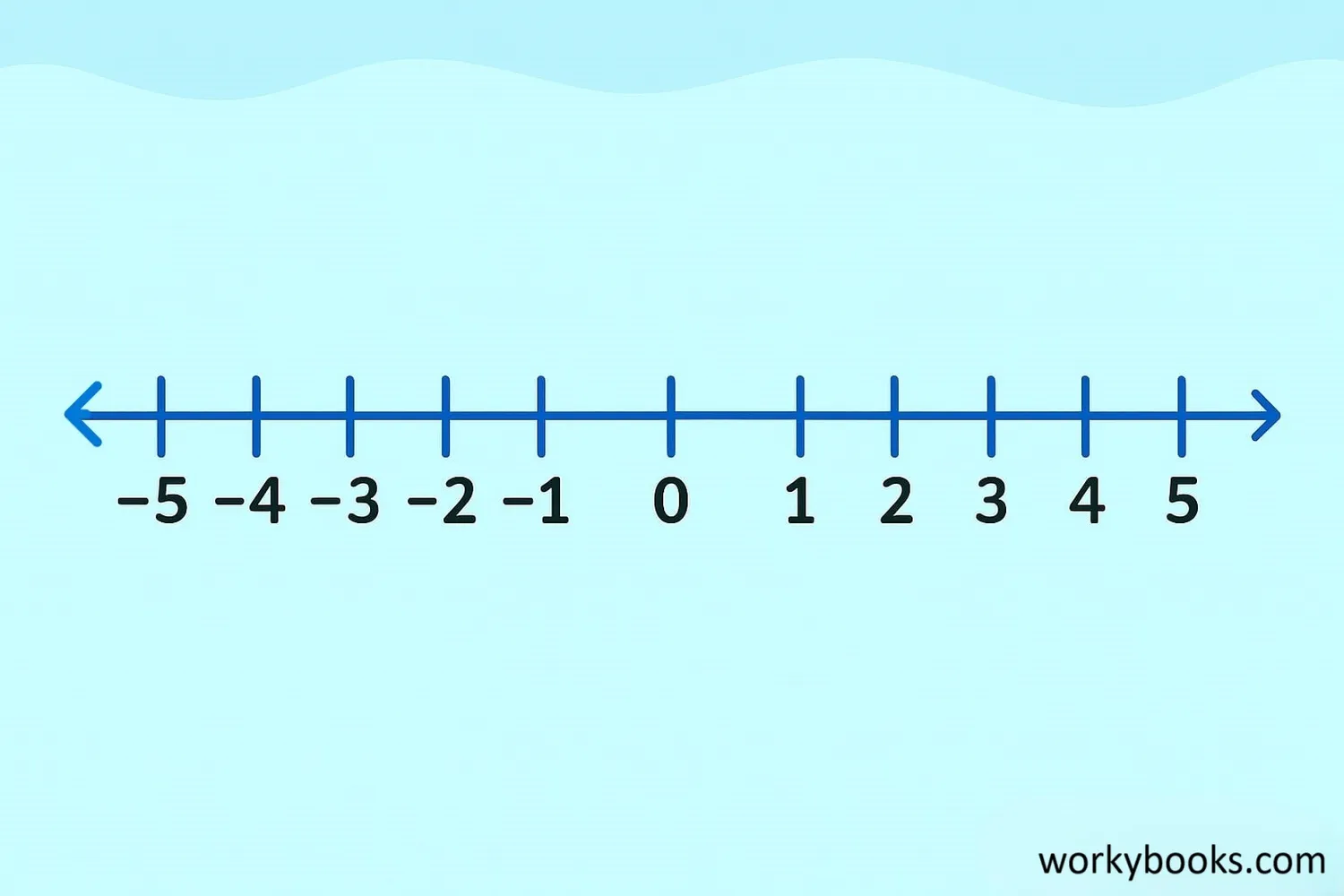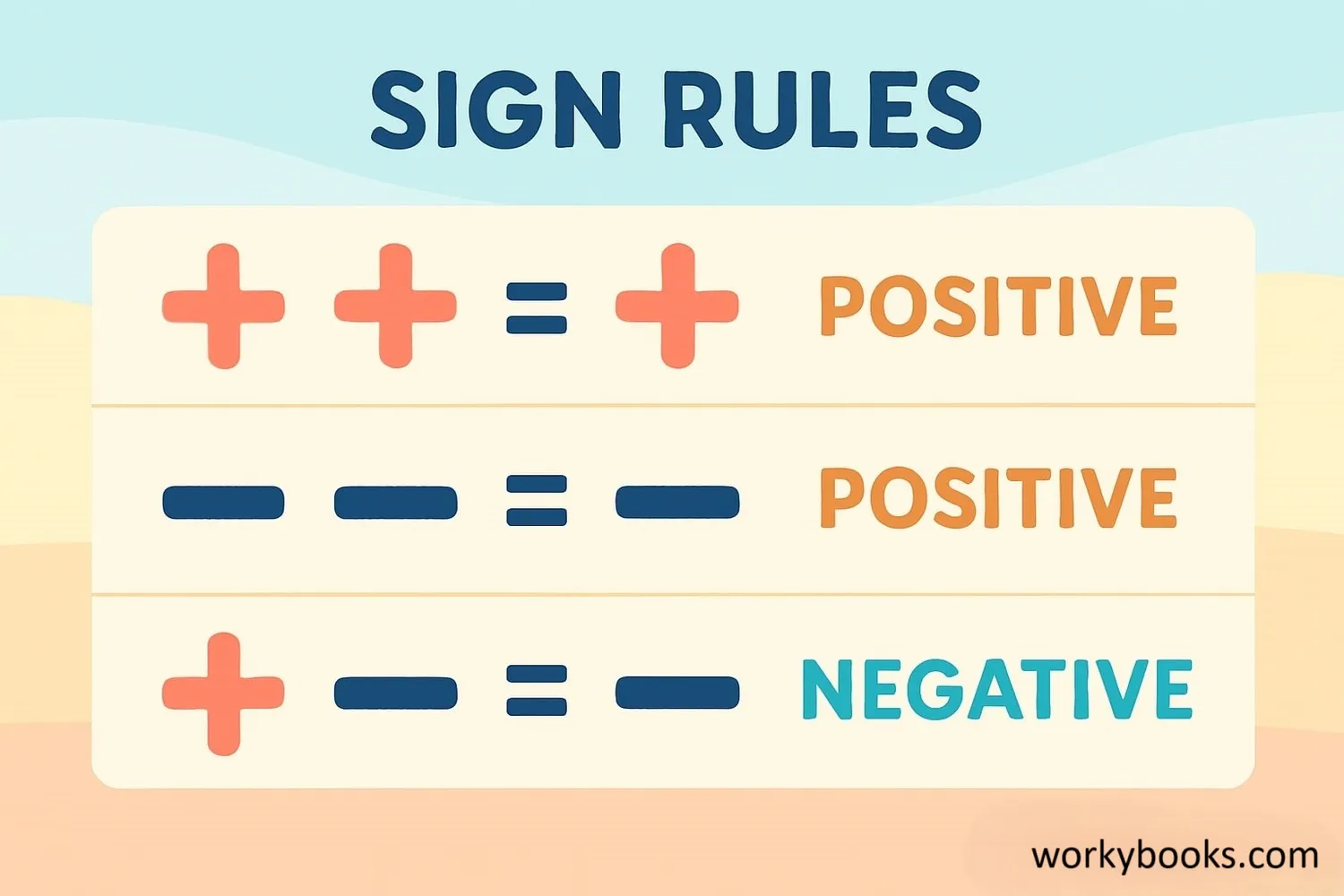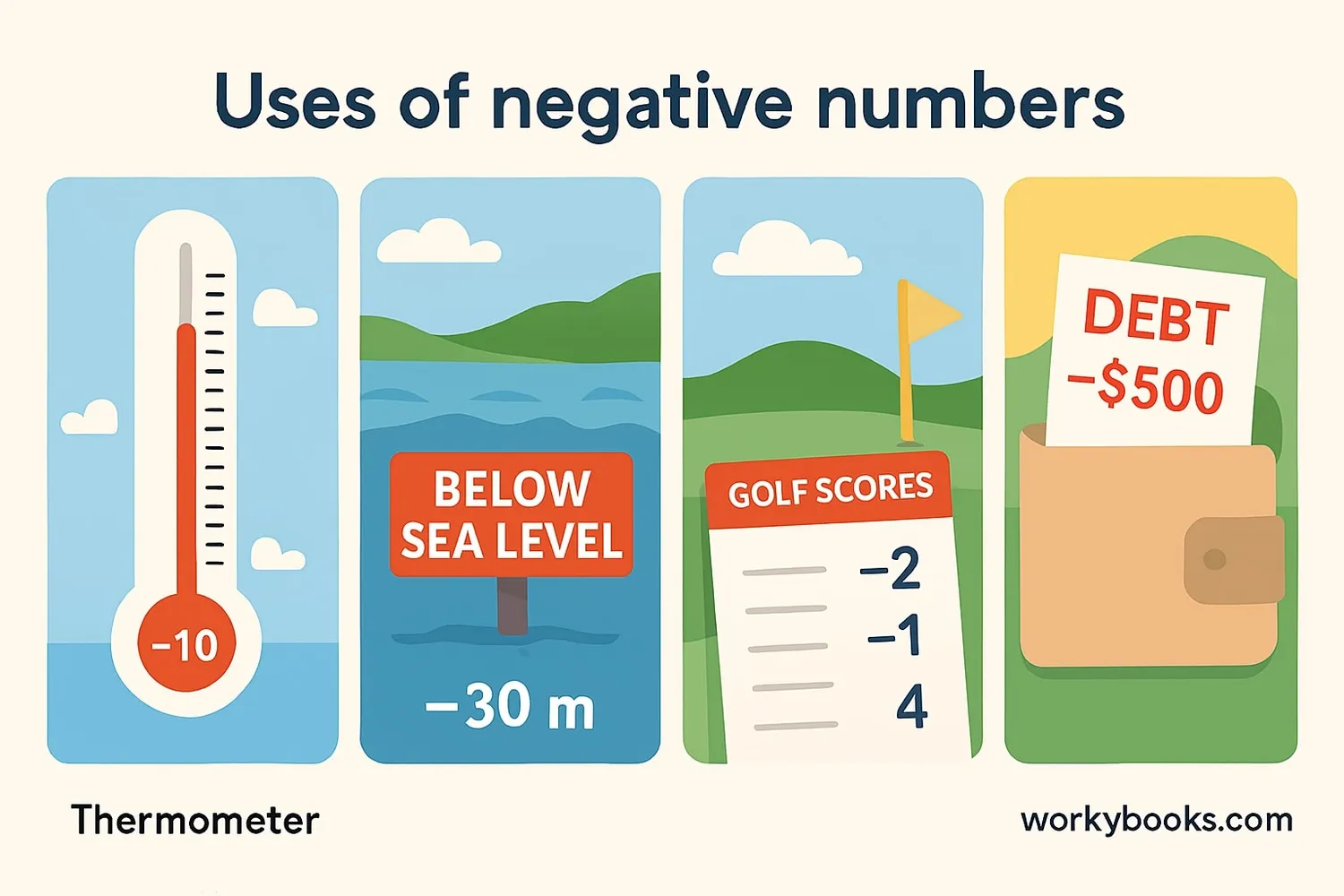Negative Numbers - Definition, Examples, Quiz, FAQ, Trivia
Learn about numbers below zero with simple explanations, real-world examples, and practice activities
What are Negative Numbers?

Negative numbers are numbers that are less than zero. They are written with a minus sign (-) in front, like -5 or -10.
Think of negative numbers as:
- Temperature below zero (-5°C is colder than 0°C)
- Elevation below sea level (Death Valley is -86 meters)
- Money you owe someone (if you owe $10, that's -10 dollars)
The number line helps us understand negative numbers. Numbers to the right of zero are positive. Numbers to the left of zero are negative.
Key Concept
Negative numbers represent values less than zero. They are the opposite of positive numbers.
Rules for Negative Numbers

When working with negative numbers, there are some important rules to remember:
Comparing Numbers
Negative numbers are smaller than positive numbers. For example: -5 < 2.
Opposite Numbers
Numbers like 5 and -5 are opposites. They are the same distance from zero.
Ordering
When ordering negative numbers, remember: -10 < -5 because -10 is further left on the number line.
Double Negatives
Two negative signs become positive: -(-5) = 5
Remember
The further left a number is on the number line, the smaller it is. -10 is smaller than -5!
Adding & Subtracting Negative Numbers
Adding and subtracting negative numbers might seem tricky at first, but it's easy when you understand the rules:
Adding Negative Numbers
Adding a negative number is the same as subtracting:
Subtracting Negative Numbers
Subtracting a negative number is the same as adding:
Tip
Think of negative signs as directions: subtracting a negative is like turning around and going positive!
Multiplying & Dividing Negative Numbers
When multiplying or dividing negative numbers, the sign rules are important:
| Operation | Result | Example |
|---|---|---|
| Positive × Positive | Positive | 4 × 3 = 12 |
| Positive × Negative | Negative | 4 × (-3) = -12 |
| Negative × Positive | Negative | -4 × 3 = -12 |
| Negative × Negative | Positive | -4 × (-3) = 12 |
| Positive ÷ Positive | Positive | 12 ÷ 3 = 4 |
| Positive ÷ Negative | Negative | 12 ÷ (-3) = -4 |
| Negative ÷ Positive | Negative | -12 ÷ 3 = -4 |
| Negative ÷ Negative | Positive | -12 ÷ (-3) = 4 |
Remember
Same signs give positive results: positive/positive or negative/negative
Different signs give negative results: positive/negative or negative/positive
Real-Life Examples of Negative Numbers

Negative numbers are all around us! Here are some common examples:
Temperature: When it's cold outside, temperatures drop below zero. -5°C means 5 degrees below freezing.
Elevation: Places below sea level have negative elevations. Death Valley is -86 meters below sea level.
Sports: In golf, scores below par are negative. A score of -3 means 3 under par.
Money: When you owe money, it's negative. If you have -$20 in your account, you owe $20.
Science: Electrons have a negative charge (-), while protons have a positive charge (+).
Think About
Can you find other examples of negative numbers in your daily life?
Negative Numbers Practice Quiz
Test your understanding of negative numbers with this 5-question quiz. Choose the correct answer for each question.
Frequently Asked Questions
Here are answers to common questions about negative numbers:
Negative Numbers Trivia
Discover interesting facts about negative numbers:
Ancient Origins
The concept of negative numbers first appeared in ancient China around 200 BCE in the book "The Nine Chapters on the Mathematical Art". Chinese mathematicians used red rods for positive numbers and black rods for negative numbers.
Electrical Charges
In electricity, negative numbers represent the charge of electrons. When you shuffle your feet on carpet, you build up negative charges that can create a spark when you touch a doorknob!
Number Line Innovation
The number line with negative numbers was developed by English mathematician John Wallis in the 17th century. Before this, many mathematicians didn't believe negative numbers were "real"!
Coldest Temperature
The coldest temperature ever recorded on Earth was -89.2°C (-128.6°F) at the Soviet Vostok Station in Antarctica on July 21, 1983. That's colder than dry ice!





